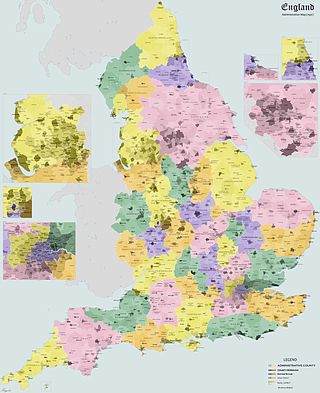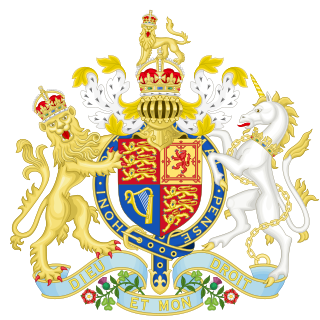In many countries, a mayor is the highest-ranking official in a municipal government such as that of a city or a town. Worldwide, there is a wide variance in local laws and customs regarding the powers and responsibilities of a mayor as well as the means by which a mayor is elected or otherwise mandated. Depending on the system chosen, a mayor may be the chief executive officer of the municipal government, may simply chair a multi-member governing body with little or no independent power, or may play a solely ceremonial role. A mayor's duties and responsibilities may be to appoint and oversee municipal managers and employees, provide basic governmental services to constituents, and execute the laws and ordinances passed by a municipal governing body. Options for selection of a mayor include direct election by the public, or selection by an elected governing council or board.
An alderman is a member of a municipal assembly or council in many jurisdictions founded upon English law. The term may be titular, denoting a high-ranking member of a borough or county council, a council member chosen by the elected members themselves rather than by popular vote, or a council member elected by voters.
A town council, city council or municipal council is a form of local government for small municipalities.

A municipal borough was a type of local government district which existed in England and Wales between 1835 and 1974, in Northern Ireland from 1840 to 1973 and in the Republic of Ireland from 1840 to 2002. Broadly similar structures existed in Scotland from 1833 to 1975 with the reform of royal burghs and creation of police burghs.

The Montreal City Council is the governing body in the mayor–council government in the city of Montreal, Quebec. The head of the city government in Montreal is the mayor, who is first among equals in the city council. The council is a democratically elected institution and is the final decision-making authority in the city, although much power is centralized in the executive committee. The council consists of 65 members from all boroughs of the city. The council has jurisdiction over many matters, including public security, agreements with other governments, subsidy programs, the environment, urban planning, and a three-year capital expenditure program. The city council is also required to supervise, standardize or approve certain decisions made by the borough councils.

The functions of local government in the Republic of Ireland are mostly exercised by thirty-one local authorities, termed County, City, or City and County Councils. The principal decision-making body in each of the thirty-one local authorities is composed of the members of the council, elected by universal franchise in local elections every five years from multi-seat local electoral areas using the single transferable vote. Many of the authorities' statutory functions are, however, the responsibility of ministerially appointed career officials termed Chief executives. The competencies of the city and county councils include planning, transport infrastructure, sanitary services, public safety and the provision of public libraries. Each local authority sends representatives to one of three Regional Assemblies.

Leicester City Council is a unitary authority responsible for local government in the city of Leicester, England. It consists of 54 councillors, representing 22 wards in the city, overseen by a directly elected mayor. It is currently controlled by the Labour Party and has been led by mayor Sir Peter Soulsby since 2011. The council also appoints a ceremonial Lord Mayor who chairs council meetings; the directly elected mayor is termed the City Mayor to distinguish the post from the Lord Mayor.
Liverpool City Council elections will be held every four years from 2023. Between 1973 and 2021 elections were generally held three years out of every four, with a third of the council being elected each time. Liverpool City Council is the local authority for the metropolitan borough of Liverpool in Merseyside, England. Since the last boundary changes in 2004, 90 councillors have been elected from 30 wards. New ward boundaries are being prepared to take effect from the 2023 election.

The Local Government Act 1888 was an Act of Parliament which established county councils and county borough councils in England and Wales. It came into effect on 1 April 1889, except for the County of London, which came into existence on 21 March at the request of the London County Council.
A municipal council is the legislative body of a municipality or local government area. Depending on the location and classification of the municipality it may be known as a city council, town council, town board, community council, rural council, village council, or board of aldermen.

Reading Borough Council, formerly known as Reading Corporation, is the local authority for Reading in the county of Berkshire, England. Reading is a unitary authority with borough status. As a unitary authority the council has the powers of a county council and district council combined. Berkshire is purely a ceremonial county, with no administrative responsibilities.

Slough Borough Council is the local authority for the Borough of Slough, in Berkshire, England. Slough is a unitary authority, having the powers of a county and district council combined. Berkshire is purely a ceremonial county, with no administrative responsibilities.

Peterborough City Council is the local authority for Peterborough in the East of England. It is a unitary authority, having the powers of a non-metropolitan county and district council combined. The City was incorporated as a municipal borough in 1874; from 1888, it fell within the jurisdiction of the Soke of Peterborough county council and from 1965, Huntingdon and Peterborough county council. In 1974, it was replaced by a wholly new non-metropolitan district, broadly corresponding to the Soke, in the new enlarged Cambridgeshire. In 1998, Peterborough became independent of Cambridgeshire as a unitary authority, but the city continues to form part of that county for ceremonial purposes as defined by the Lieutenancies Act 1997.
The Royal Commission on the Amalgamation of the City and County of London was a royal commission which considered the means for amalgamating the ancient City of London with the County of London, which had been created in 1889. The commission reported in 1894. The government headed by Lord Rosebery accepted the recommendations of the commission, but when a Conservative government under Lord Salisbury came to power in 1895 the reforms were almost entirely abandoned.

Local government in the Australian state of Victoria consists of 79 local government areas (LGAs). Also referred to as municipalities, Victorian LGAs are classified as cities (34), shires (38), rural cities (6) and boroughs (1). In general, an urban or suburban LGA is called a city and is governed by a City Council, while a rural LGA covering a larger rural area is usually called a shire and is governed by a Shire Council. Local councils have the same administrative functions and similar political structures, regardless of their classification.

Merton London Borough Council is the local authority for the London Borough of Merton in Greater London, England. It is one of the 32 councils that form Greater London.

Barnsley Metropolitan Borough Council is the local authority of the Metropolitan Borough of Barnsley in South Yorkshire, England. Barnsley is a metropolitan borough, one of four in South Yorkshire, and provides the majority of local government services in Barnsley. The council is a constituent member of the South Yorkshire Mayoral Combined Authority.

Tamworth Borough Council is the local authority for the borough of Tamworth in the county of Staffordshire, England. The council consists of 30 councillors, three for each of the 10 wards in the town. It is currently under no overall control, led by Conservative councillor Thomas Jay. The borough council is based at Marmion House.
Liverpool Town Council existed from 1835 to 1880.

The Douglas City Council is the local elected authority for Douglas, the capital city of the Isle of Man and one of the 17 parishes that run local services on the island. It is the largest local authority, with 12 elected councillors representing the city.












